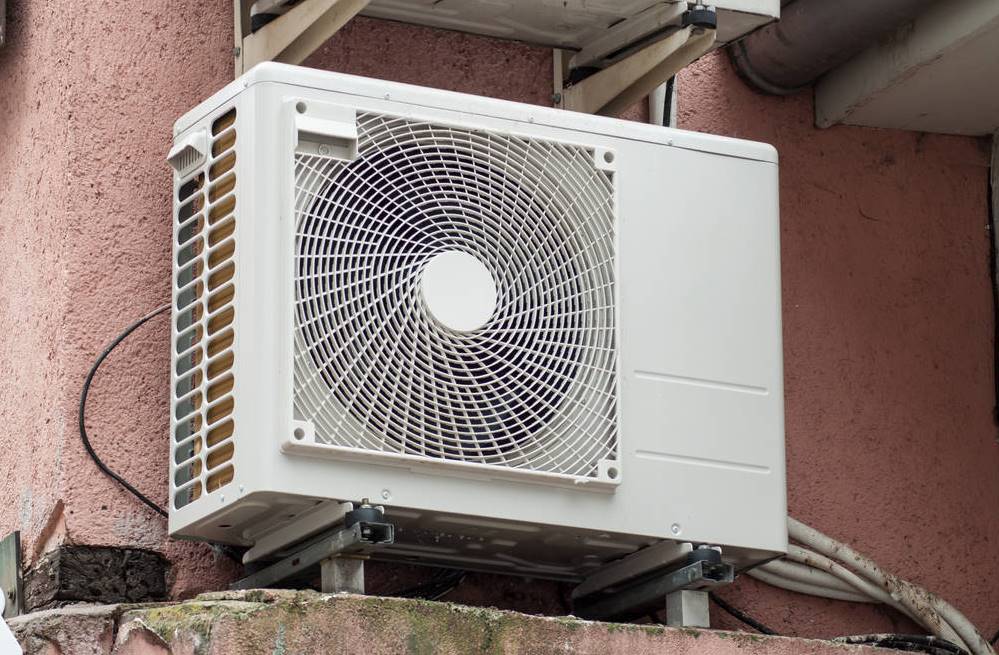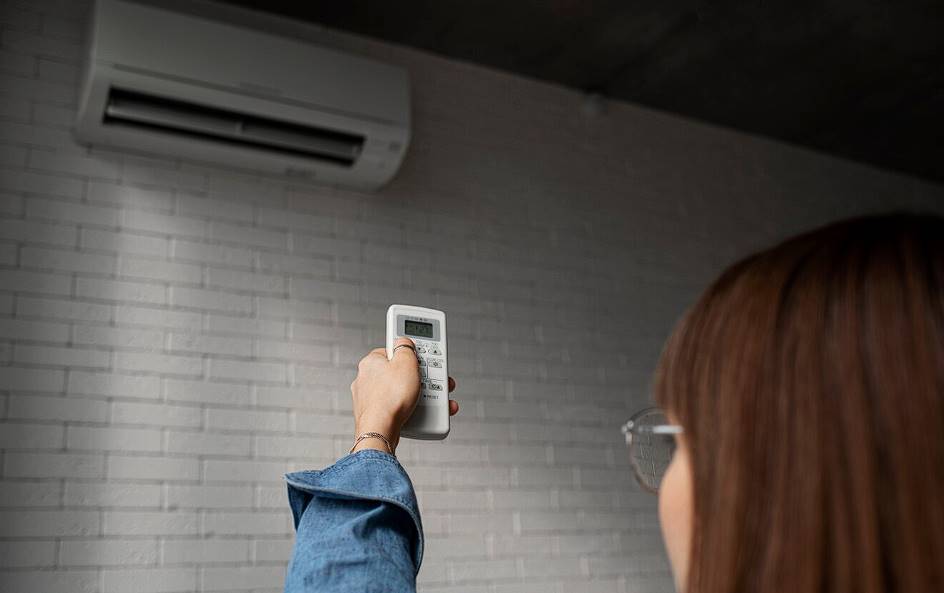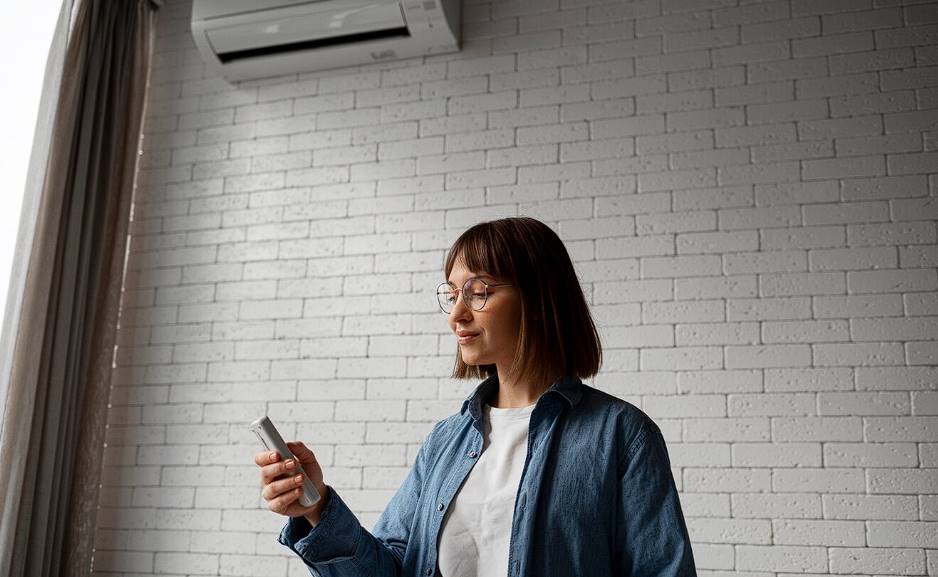Imagine you lived in a world where you had to decide between investing in a heating or cooling system. You were only allowed to pick one or the other.
Would you rather use an air conditioner when it's cold out? Unless you prefer to sweat it out in the summer and be toasty in the winter.
Finding a way around the rule is your best bet in these situations. A reverse cycle system can be the answer to your predicament. These HVAC systems not only warm your home throughout the colder months, but they also provide exceptional cooling performance. It's a done deal!
The benefits of reverse-cycle air conditioning are not limited to the abstract. One-system installations have various benefits, including low initial investment and high efficiency. In this comprehensive guide, we'll examine the inner workings of a reverse-cycle air conditioner, explaining its key aspects and underlying concepts.
What Is Air Conditioning With A Reverse Cycle?
The term "reverse cycle air conditioning" refers to a specific type of HVAC system that can also be used to generate heat. This Reverse Air Conditioning technique is unique because it can cool and heat a home, regardless of the season.
This approach to air conditioning is a godsend for locations that experience a wide range of seasons throughout the year, even if it is one where summer or winter only lasts for a short time.
You will save money by purchasing only one unit for heating and cooling. Means of both heating and cooling, respectively.
More than just an air conditioner, a Reverse Cycle Air Conditioning System can filter and dehumidify the air, creating a more hygienic and comfortable space without sacrificing cooling power.
What Is The Process Of Reverse Cycle Air Conditioning?
Air conditioners with a reverse cycle filter dehumidify the air around them, allowing them to heat your home in the winter while cooling it in the summer. Let's take a more in-depth look at how air conditioners with a reverse cycle work.
Heating
The reverse-cycle mechanism is used to bring warm air outside during the colder months. Even when the temperature outside is as low as -15 degrees Celsius, a decent reverse-cycle air conditioner with an automatic defrost cycle will be able to heat your home successfully. This is because the unit does not require it to be warm outdoors to perform this function.
In a reverse-cycle air conditioner's 'heat' mode, gaseous refrigerant is circulated via an outside coil to draw heat from the ambient air. A compressor then sends this down into a condenser to cool it down.
The compression of the refrigerant results in an increase in its temperature. A fan then blows this hot air into the room. After this, the refrigerant is poured into the condenser and circulated through a second evaporator to be cooled.
Cooling
The cooling mode of operation for the reverse cycle air conditioner can be activated with the flip of a switch. When the process is turned around, the device will remove heat from the air inside your home, store it, and then pump it outside, leaving your home with a lower temperature. Air conditioners with reverse-cycle technology are able to chill your home even when the outside temperature is as high as 46 degrees Celsius.
Advantages Of Reverse Cycle Air Conditioning
The following are just a few of the many advantages involved with using air conditioning with a reverse cycle:
You Only Pay Once
A single unit serving two purposes is a major benefit of implementing a reverse cycle system. Switching the unit's setting from cooling to heating will make your home refreshingly cool in the summer and toastily warm in the winter.
Some People indeed live in a climate where they can switch between the heater and the cooler. Therefore, a reverse cycle system may significantly reduce heating and cooling costs for your home.
They Keep You Warm During The Winter.
The method of heating makes all the difference; yes, they do! When compared to regular gas or portable electric heaters, a reverse-cycle air conditioner operates significantly differently. Rather than relying on inefficient heat "creation," as do traditional heaters, reverse cycle systems "absorb" heat from the outdoors to warm the indoors.
In heating mode, the appliance reverses what it does when cooling a room; it pulls heat from the air outside and distributes it throughout the space. To become technical, heat from the outside air is transferred to a refrigerant as it flows through an exterior coil.
This refrigerant is compressed and pushed into an indoor fan coil unit, where it is turned into usable heat for the home's occupants. The unit can carry out its intended purpose regardless of the ambient temperature, making it ideal for subzero environments.
A decent reverse-cycle air conditioner will include an automatic defrost cycle for more efficient operation. This is because they are built with colder climates in mind. Therefore, even if the temperature outside drops to as low as minus 15 degrees Celsius, your home will still be warm thanks to the heating capabilities of your reverse-cycle air conditioner.
They Help Clean The Air.
The removal of dust and smoke particles is desired. Some split systems of reverse cycle air conditioners may even clean the air in your home in addition to heating and cooling it. Many systems have an inbuilt air-purifying filter that may be used to remove harmful allergens and other particles from the air in your house.
This advanced technology utilises a robust oxidative decomposition process to eliminate smells, pathogens, and hazardous compounds from the surrounding environment.
Given that Australia shows one of the highest prevalence rates of asthma globally, alongside elevated levels of hay fever and other allergic conditions, the utilisation of a reverse cycle system presents an unforeseen benefit.
Consequently, this aspect assumes significance when contemplating the requirements of a burgeoning family, extending beyond mere considerations of temperature regulation to encompass health-related considerations.
Environmental Friendliness
Benefits to performance, a choice of energy ratings, lower operating costs, greater efficiency, and fewer glasshouse gas emissions make ducted, reverse, reverse cycle air conditioning systems environmentally friendly.
In contrast to conventional heating and cooling methods based on combustion, the back, air conditioning systems and ducted reverse cycle all rely on natural heat transfer to function. This reduces the system's negative impact on the environment.
Less Noise Means More Comfort.
Perfect temperature control is the most important aspect that can affect the level of comfort in your home when it comes to a heating or cooling system; nevertheless, it is not the only thing that can have an effect.
The amount of noise generated by the operation can also have an effect on the level of comfort. Companies that make reverse-cycle air conditioners are working to make their products as quiet as possible while providing optimal cooling and heating for your home.
They Are Flexible And Adaptable.
Many new reverse-cycle air conditioners feature thermostats and cutting-edge inverter technology, allowing them to automatically adjust their output based on the room's temperature and humidity levels.
One of the most efficient methods of electrically heating and cooling a home is made possible by inverter technology. Unlike traditional air conditioners, which cycle on and off, inverter systems gradually adjust power to reach the set temperature more quickly and keep it constant without fluctuations. This allows for continuous comfort and improved efficiency.
Dual Functionality
Dual functionality and performance are some of the most significant advantages gained from installing a reverse-cycle process three-cycle air conditioning system as opposed to a two-cycle air conditioning system. This advantage is ubiquitous and can have a big impact.
Users of a single system that incorporates reverse-cycle and two-cycle air conditioners can take advantage of efficient cooling during the warm summer months and dependable heating during the chilly winter months.
This sort of system is the most popular of its kind. Because of its versatility and performance, it can give comfort throughout the year without using any extra equipment.
Savings In Terms Of Both Costs And Energy
The effectiveness of heating and cooling systems that use a reverse cycle is well-known. The reverse cycle system integrates the various components of the HVAC installation process into a single, low-power-consumption unit by transferring heat rather than producing it.
Users who take advantage of the reverse cycle system's various installation benefits should expect significant reductions in their monthly energy bills because prices derive from energy rating and operating costs rather than energy consumption and running costs.
Professionals Could Install Them.
When you purchase and install a reverse cycle air conditioning system, you will receive expert guidance on the most effective heating solution, an added benefit of this home improvement project.
Because each residence is unique, a specialised dealer will be able to assess your requirements and offer guidance regarding the most suitable solution. This will ensure that you get an item of the highest possible quality that functions correctly and successfully as a result of expert installation and ongoing assistance.
What Other Features Do Reverse Cycle Heating And Cooling Systems Have?
You can use a reverse cycle air conditioner for heating and cooling, and it also has these additional useful features:
- Use the dry mode on your air conditioner when the humidity is high to help dehumidify the air.
- Utilise your Smart Thermostat with Auto Mode to automatically keep the temperature at a comfortable level.
- With the Economy Mode, place an even greater emphasis on monetary savings and energy conservation.
- Activate the Sleep Mode to have the temperature automatically adjusted to accommodate the varying stages of sleep that occur throughout the night.
- Use cutting-edge technology to filter and sterilise the air to purify the air.
Should You Install A Split Or A Ducted Reverse Cycle System?
There are a couple of ways to install a reverse-cycle air conditioner, and both have their benefits. Both ducted and split systems function similarly while operating in reverse cycle mode. The primary distinctions are in the expense of setup and the location of HVAC systems.
Ducted reverse cycle systems have more complicated installation requirements and a higher price tag. Ducted units are better suited for new construction and renovations because ducting and vents must be installed in each room.
In return, ducted systems provide centralised heating and cooling throughout the building. In other words, you may use these systems to heat and cool the entire house simultaneously.
Reverse cycle split systems are significantly easier and less expensive to install. An indoor unit, sometimes known as a head unit, is mounted high up on the wall, and an outdoor unit is mounted on the wall that corresponds to the outdoor location. Installing the ducting was significantly more difficult than connecting the two units, connected by a few wires and pipes.
Split system air conditioners are less expensive and easier to install, but they can only chill or heat the room in which they are placed. Space conditioning and heating refer to the same thing. If you don't have the space for ductwork or don't want to deal with it, a split system may be the way for you. Additionally, split system air conditioners are wonderful for use in the bedroom, home office, and living room.
How Reverse Cycle Air Conditioning Heats Your Space
Heat pumps can switch from sleep mode to heating mode by switching a valve on an exterior refrigerant coil, allowing for the management of hot air insulation and outside air, as well as the efficient circulation of high-quality hot air refrigerant within a single unit. The external warm air unit now functions as the evaporator, drawing heat from the outdoor hot air and transforming it into a gas with a lower pressure.
Even in the winter, the air still contains heat energy. The heat pump is able to properly collect this heat energy and transfer it from the outside air to warm, hot air for storage and maintenance purposes.
The heat pump transfers heat to chill the air inside the interior air conditioner unit and then absorbs heat transmitted to it. It then releases the heat that it has absorbed into the coil of the indoor air conditioner unit.
This method heats the air inside the traditional air conditioner or other air conditioning system or space to create a pleasant, excellent, cool, calm, relaxed, and comfortable environment, even in the colder winter.
Conclusion
Reverse cycle air conditioning is a unique HVAC system that can both heat and cool a home, regardless of the season. This approach is ideal for locations with a wide range of seasons, as it saves money by purchasing only one unit for both heating and cooling. Reverse cycle air conditioners filter and dehumidify the air, creating a more hygienic and comfortable space without sacrificing cooling power.
They work by bringing warm air outside during the colder months, and storing it in the air during the summer. They also help clean the air by removing dust and smoke particles, and some systems have an inbuilt air-purifying filter that removes harmful allergens and other particles.
This advanced technology is particularly beneficial for families with high asthma and hay fever rates, as it eliminates smells, pathogens, and hazardous compounds from the surrounding environment.
Reverse-cycle air conditioning systems offer environmental friendliness, reduced noise, and improved comfort due to natural heat transfer. They are flexible and adaptable, with inverter technology allowing them to adjust output based on temperature and humidity levels.
They also provide dual functionality, offering efficient cooling during summer and reliable heating during winter. Reverse-cycle systems also save on costs and energy by transferring heat rather than producing it. Professionals can install these systems, providing expert guidance on the most effective heating solution.
There are two ways to install a reverse-cycle air conditioner: ducted and split systems. Ducted systems have more complicated installation requirements and are better suited for new construction and renovations. Split systems are easier and less expensive but can only chill or heat the room in which they are placed.
Heat pumps can switch from sleep mode to heating mode, transferring heat from the outside air to warm, hot air for storage and maintenance purposes. This method creates a comfortable, cool, and comfortable environment even in colder winters.
Content Summary
- Would you rather use an air conditioner when it's cold out?
- A reverse cycle system can be the answer to your predicament.
- These HVAC systems not only warm your home throughout the colder months, but they also provide exceptional cooling performance.
- In this comprehensive guide, we'll examine the inner workings of a reverse-cycle air conditioner, explaining its key aspects and underlying concepts.
- The term "reverse cycle air conditioning" refers to a specific type of HVAC system that can also be used to generate heat.
- This Reverse Air Conditioning technique is unique because it can cool and heat a home, regardless of the season.
- You will save money by purchasing only one unit for heating and cooling.
- More than just an air conditioner, a Reverse Cycle Air Conditioning System can filter and dehumidify the air, creating a more hygienic and comfortable space without sacrificing cooling power.
- Air conditioners with a reverse cycle filter dehumidify the air around them, allowing them to heat your home in the winter while cooling it in the summer.
- In a reverse-cycle air conditioner's 'heat' mode, gaseous refrigerant is circulated via an outside coil to draw heat from the ambient air.
- The cooling mode of operation for the reverse cycle air conditioner can be activated with the flip of a switch.
- Therefore, a reverse cycle system may significantly reduce heating and cooling costs for your home.
- When compared to regular gas or portable electric heaters, a reverse-cycle air conditioner operates significantly differently.
- A decent reverse-cycle air conditioner will include an automatic defrost cycle for more efficient operation.
- Some split systems of reverse cycle air conditioners may even clean the air in your home in addition to heating and cooling it.
- Benefits to performance, a choice of energy ratings, lower operating costs, greater efficiency, and fewer glasshouse gas emissions make ducted, reverse, reverse cycle air conditioning systems environmentally friendly.
- This reduces the system's negative impact on the environment.
- Perfect temperature control is the most important aspect that can affect the level of comfort in your home when it comes to a heating or cooling system; nevertheless, it is not the only thing that can have an effect.
- One of the most efficient methods of electrically heating and cooling a home is made possible by inverter technology.
- Dual functionality and performance are some of the most significant advantages gained from installing a reverse-cycle process three-cycle air conditioning system as opposed to a two-cycle air conditioning system.
- The effectiveness of heating and cooling systems that use a reverse cycle is well-known.
- When you purchase and install a reverse cycle air conditioning system, you will receive expert guidance on the most effective heating solution, an added benefit of this home improvement project.
- You can use a reverse cycle air conditioner for heating and cooling, and it also has these additional useful features:
- Use the dry mode on your air conditioner when the humidity is high to help dehumidify the air.
- Use cutting-edge technology to filter and sterilise the air to purify the air.
- There are a couple of ways to install a reverse-cycle air conditioner, and both have their benefits.
- Both ducted and split systems function similarly while operating in reverse cycle mode.
- Ducted reverse cycle systems have more complicated installation requirements and a higher price tag.
- Reverse cycle split systems are significantly easier and less expensive to install.
- Space conditioning and heating refer to the same thing.
- If you don't have the space for ductwork or don't want to deal with it, a split system may be the way for you.
- Additionally, split system air conditioners are wonderful for use in the bedroom, home office, and living room.
- Even in the winter, the air still contains heat energy.
- The heat pump is able to properly collect this heat energy and transfer it from the outside air to warm, hot air for storage and maintenance purposes.
- The heat pump transfers heat to chill the air inside the interior air conditioner unit and then absorbs heat transmitted to it.
- This method heats the air inside the traditional air conditioner or other air conditioning system or space to create a pleasant, excellent, cool, calm, relaxed, and comfortable environment, even in the colder winter.
Frequently Asked Questions
Reverse cycle air conditioning excels in diverse climates. Its remarkable capability to extract heat from the outdoor air remains effective even in colder temperatures. This versatility makes it ideal for regions experiencing warm summers and chilly winters, ensuring year-round comfort and efficiency.
The refrigerant is a crucial component of a reverse-cycle air conditioner. It circulates through a closed loop, changing from liquid to gas as it absorbs and releases heat. This phase change allows for efficient temperature control.
When choosing a reverse-cycle air conditioning system, it's imperative to consider critical factors like the dimensions of your living area, the quality of insulation, and the prevailing local climate. Seeking guidance from a skilled HVAC technician ensures you select a system tailored precisely to your unique requirements and preferences.
Yes, reverse-cycle air conditioning proves highly effective in commercial settings. Its versatility allows precise temperature control in various environments, including offices, retail spaces, and other commercial establishments. This system ensures a comfortable and productive atmosphere for employees and customers alike.
Regular maintenance is crucial for preserving the efficiency of your reverse-cycle air conditioning system. This encompasses cleaning or replacing filters to maintain air quality, inspecting coils for potential issues, and ensuring optimal refrigerant levels for seamless operation. Scheduling annual professional maintenance is highly advised to extend the lifespan of your system and prevent any unforeseen breakdowns.



